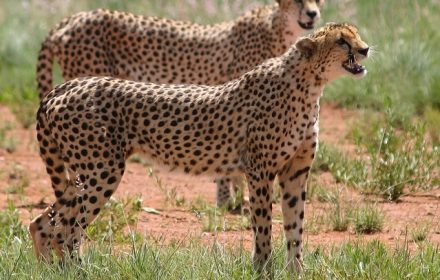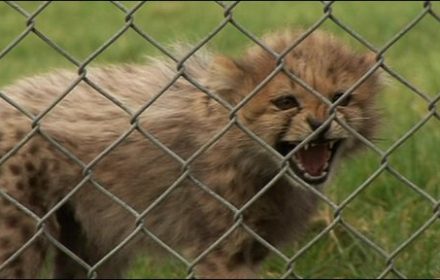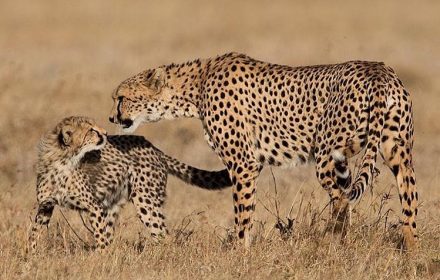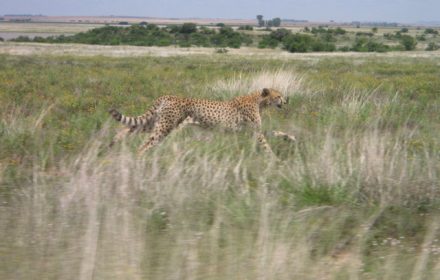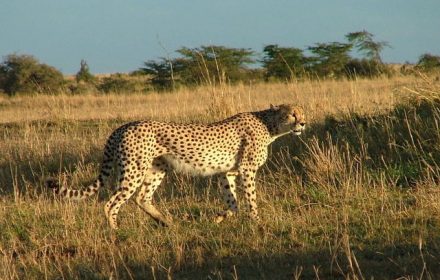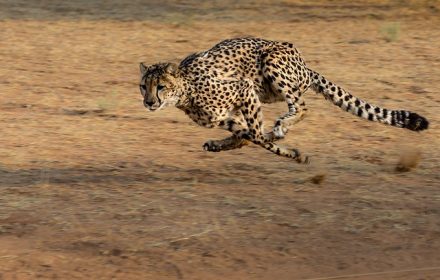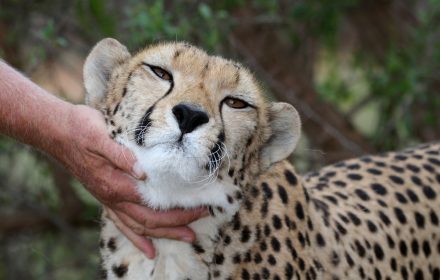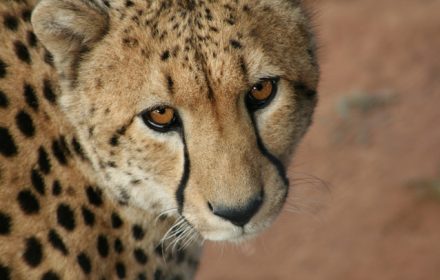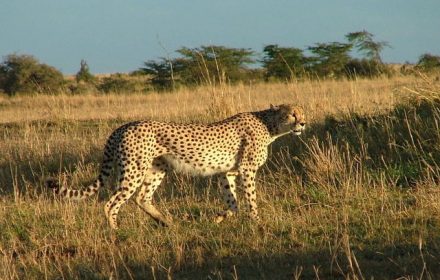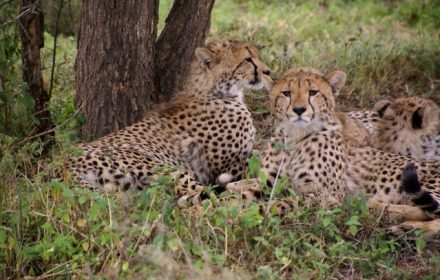Any wildlife safari traveler in Kenya would concur that cheetahs in the wild are typically solitary animals, but they are the most sociable among all the fat cats. After leaving the mother cheetah around the age of one, siblings stay together for six months. In the cheetah family, it is the domesticated females who take up the lion’s share of bringing up the cubs and forming family relationships. Males’ role starts and ends at mating. Apart from mating, males neither have any familial function nor do they possess any feelings for or bonding with the pregnant mother or the cubs.
Cheetah
There are certain limitations when bringing up cheetahs. People have been killed while interacting with cheetahs. Treating them like domestic pets does not make them safe either. Caring for cheetahs is unlike that of a domestic animal. Even if they have been brought up from a young age, news reports abound of their attacks. Being forced to live in captivity can lead to stress as it prevents them from exhibiting natural instincts. And out of this frustration, cheetahs can become destructive and cause havoc. Urine spraying is one such behavior. In short, cheetahs are a danger to clueless pet owners.
One of the reasons for cheetah’s death is AA amyloidosis, which is a life-threatening illness. Sadly, this destructive disease affects the regular day-to-day functioning and existence of the animals. It is a disease that spreads internally and can eventually cause organ failure ultimately leading to death. It is a killer that can wipe out huge numbers of cheetahs and cause a substantial dent in its population. At one time, there was an epidemic of AA amyloidosis, and very many cheetahs died of this tragedy. Cheetahs do not seem to be able to outrun this disease, pun intended, despite famously speedy.
A running cheetah at its top speed while on a wildlife safari in Kenya is not a rare sight. It is renowned for its incredible speed when in a chase but documentary-makers film cheetahs for the creature’s majesty, and often underplay its speed. However, the BBC bucked the trend in its show The Hunt with aerial shots that reveal that the animal can reach top speeds in no time. In fact, within three seconds it can accelerate up to 60 to 75 miles per hour covering a distance of 1,600 feet with up to 25 feet in just one stroke.
Wildlife biologists and scientists are doubtful whether cheetah can outrun extinction. If the population of cheetahs falls by even just 10 percent on an annual basis, then the numbers would decline by 50 percent in 15 years. Hence, breeding programs have been established in cheetah-populated areas to reverse this trend. The results seem promising in some places but not so much in others. Time will tell. However, if what the team predicts come true, then it is worth doing a wildlife safari in Kenya to watch these remarkable creatures before they get wiped out from the face of the earth.
The Jamaican sprinter Usain Bolt, remarkably won the gold medal nine times at the Olympics. People often wondered how the record-breaking runner, Usain Bolt, would fare against a cheetah. The animals even have an acceleration rate rivaling that of the sports car, Lamborghini. Because cheetahs are so fast, photographing them at that speed is nearly impossible. But the National Geographic did it when its Channel conducted a virtual race between Sarah, the cheetah, and Usain Bolt. They were curious to know what would have happened if the animal took part in the 100m final of the World Championship in 2009.
Anybody involved in the study of cheetahs, the fastest sprinter in the world, would agree that pet cheetah is not a new phenomenon. Human beings have been keeping cheetahs not only as pets but also for various other reasons for thousands of years. Historical records indicate that Persian and Egyptian royalty often kept them in their palatial courts. As a result, cheetah dealers, trappers, and tamers were well paying jobs. But those times when cheetahs roamed abundantly in the African prairies and jungles have changed. Various factors brought on by both nature and humans have negatively affected its population numbers.
The wealthy Arabs in the Middle East relish in having a cheetah. They think having a cheetah makes them look important. People boast about owning these exotic pets. Cheetahs are obtained both legally and unlawfully, bought at auctions, or found in the wild. The Wildlife Trade Cheetah Conservation estimates that the illegal market for pet cheetahs in Saudi Arabia, Kuwait, UAE, and Qatar provide a steady supply of 300 cubs a year. The global wildlife summit has been the most active as it tackles the pet trade mainly because the smuggling of cheetahs into the Gulf States has been increasing.
Cheetah is known as the fastest land animal. It has been in existence for around four million years. It is undoubtedly a marvel of evolution. Cheetah is not considered to belong to the ‘big cat’ family because they cannot roar due to the absence of hyoid bone in its throat. But it does belong to the Felidae family and is a close relative to bobcats, pumas, and lynxes. Therefore, it is referred to as a Lesser Cat and is the only member of the genus, Acinonyx. Cheetahs have come a long way especially in the way humans have treated them.
The global cheetah population has declined just over the past century by a staggering 90% to 7,500. However, this number was simply a guess, given the difficulty of taking an accurate census of the cheetah. The recent estimate puts the number at 6,600. During the last 18 years alone the numbers have plummeted by 30%. Occupying only 17% of their historic range, they are now extinct in 20 countries. In Kenya, there are only about 1,500 cheetahs. But a new study has found that this number is actually lower than previously thought. Even worse, the population will continue to decline.

